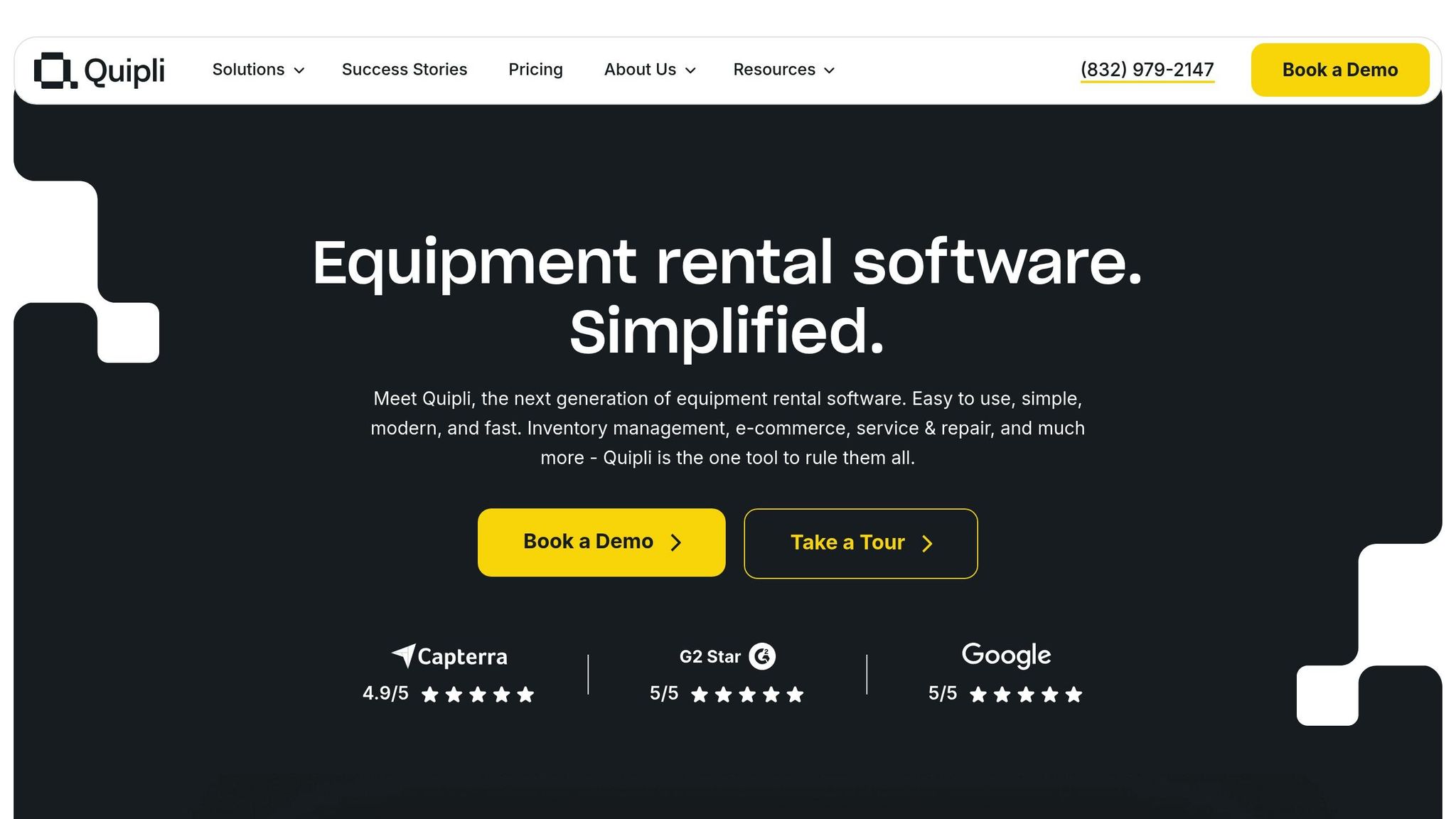Computer rental software is transforming how rental businesses operate, helping save time, cut costs, and improve customer service. Here’s what you need to know:
-
Key Features: Real-time inventory tracking, automated billing, maintenance scheduling, and mobile access.
-
Emerging Trends: AI for predictive maintenance, cloud-based solutions for accessibility, and 24/7 automated rental systems.
-
Best Practices: Use dynamic pricing to maximize revenue, self-service tools for customer convenience, and preventive maintenance to reduce downtime.
-
Implementation Tips: Match software to business goals, train staff effectively, and prioritize data security.
Quipli Equipment Rental Software Demo (Updated October)

<iframe class=”sb-iframe” src=”https://www.youtube.com/embed/S4rT2BcWOZI” frameborder=”0″ loading=”lazy” allowfullscreen style=”width: 100%; height: auto; aspect-ratio: 16/9;”></iframe>
Current Computer Rental Software Trends
The computer rental industry is being reshaped by advancements in technology, improving how businesses operate and interact with customers.
AI and Machine Learning Applications
AI automates tasks and provides predictive insights:
-
Predictive maintenance: Detect issues before downtime
-
Inventory management: Maintain optimal stock levels
-
Customer service: Instant support via AI chatbots
Cloud and Mobile Solutions
Cloud-based platforms offer:
-
Real-time data access on any device
-
Cross-platform compatibility
-
Automatic software updates
-
System integrations
24/7 Automated Rental Systems
IoT and smart devices now power fully automated rental operations with:
-
Digital contracts and e-signatures
-
Smart locks for remote access
-
Automated payments
-
Remote monitoring
Ways to Improve Rental Operations
Improving efficiency starts with smart pricing, better inventory management, and enhanced customer tools.
Smart Pricing and Data Analysis
Algorithm-based dynamic pricing can:
-
Boost Average Daily Rate by 5–15%
-
Increase occupancy by 2–3%
How to apply it:
-
Monitor market demand
-
Analyze competitor prices
-
Adjust pricing rules regularly
Stock and Maintenance Control
-
Use GPS/RFID to automate check-ins/check-outs
-
Set preventive maintenance based on usage
Customer Self-Service Options
Tools like:
-
Online booking and digital contracts
-
SMS updates and secure portals
-
Encrypted payment and ID verification
Boost satisfaction and reduce manual work.
Software Implementation Steps
Match Software to Business Goals
As Andy Clark from Point of Rental Software says:
“Rental companies choose to move or upgrade their rental management systems based on their current system’s ability to solve their most immediate problems.”
Steps:
-
Audit operations for inefficiencies
-
Engage stakeholders to build support
-
Calculate ROI of switching systems
Staff Training Methods
| Training Phase | Duration | Key Components |
|---|---|---|
| Initial Onboarding | 2–3 days | POS basics, navigation, and core features |
| Advanced Training | 4–6 days | Inventory, reporting, and customer service |
| Ongoing Support | Continuous | Refresher training, updates, and new features |
Include role-playing and real-life scenarios. Keep training short and focused.
Data Security Requirements
Security essentials:
-
Role-based permissions
-
Encrypted payments
-
Automated backups
-
Regulatory compliance
-
Regular security patches
Choose a software provider like Autlio that offers in-depth training, support, and audits.
Success Measurements
Use KPIs to measure performance post-implementation.
Income and Usage Stats
Track:
-
Utilization rate
-
Revenue per rental unit
-
Downtime percentage
-
Maintenance cost per unit
Customer Feedback
Collect:
-
Post-rental surveys
-
NPS scores
-
Response/resolution time
Business Performance Metrics
-
Operational efficiency: GPS tracking, on-time prep/delivery
-
Financial performance: Revenue trends, maintenance expenses
-
Automation levels: % of digital vs manual transactions
Conclusion
The computer rental market is projected to hit $82.6B by 2025. Technologies like AI, ML, and cloud-based systems are powering that growth. Tools like:
-
Smart inventory systems
-
Predictive analytics
-
Real-time mobile management
-
CRM integration
…are helping companies become faster, leaner, and more scalable.
To stay ahead, rental businesses should embrace automation, track their performance, and continuously optimize operations.